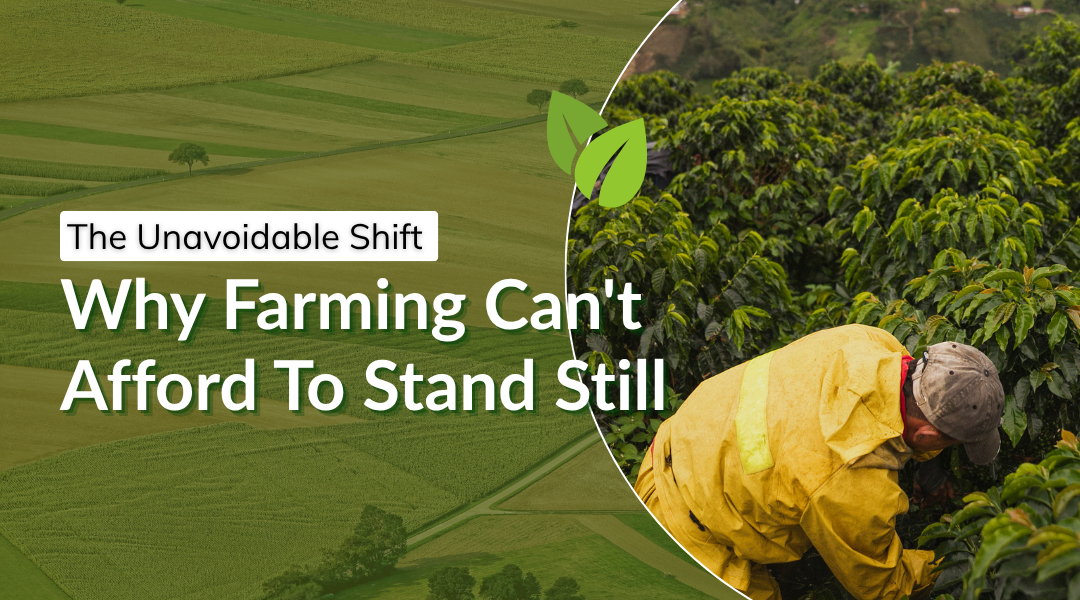For generations, the rhythm of farming was dictated by the sun and the seasons. But that familiar rhythm is now being disrupted by a confluence of pressures so great that sticking to the old ways is no longer a viable option. The very foundation of our food system is being stressed, making innovation not just a buzzword for progress, but a fundamental requirement for survival.
The Gathering Storm: Pressures Forcing Change
The challenges facing today’s agriculturalists are interconnected and intensifying.
- More Mouths, Less Land: The math is simple and stark. We’re on a trajectory to host nearly 10 billion people on the planet by mid-century. To feed them, we’ll need to produce significantly more food, but not from significantly more land. In fact, arable land is being lost to urbanization and degradation, meaning we must learn to grow more from every single acre.
- A Climate That No Longer Cooperates: The predictable weather patterns that traditional farming calendars were built upon are unraveling. Farmers in California’s Central Valley now face unprecedented heat domes that threaten almond orchards. Midwestern growers see “once-in-a-century” floods become annual events, drowning soybean fields. It’s a new era of volatility where historical knowledge is less reliable, and adaptability is key.
- The Silent Crisis in the Soil: The very ground beneath our feet is tired. Decades of intensive monocropping have stripped soils of their organic richness, turning vibrant ecosystems into inert dirt that holds water and nutrients poorly. This isn’t just about adding more fertilizer; it’s about reviving a living system.
- The Broken Tool of Chemicals: Our heavy reliance on synthetic pesticides and fertilizers has proven to be a double-edged sword. While boosting yields, it has contaminated waterways, decimated vital pollinator populations, and created super-weeds and pesticide-resistant pests, effectively breaking the very tools we depended on.
- The Vanishing Harvest Hand: Across the globe, from the vineyards of Italy to the apple orchards of Washington, a common story is told: it’s harder than ever to find people willing to do the back-breaking work of harvest. This labor crisis threatens to let food rot in the fields and makes automation a necessity, not a luxury.
A New Toolkit for a New Era
Fortunately, the same spirit of ingenuity that first gave us agriculture is now yielding a new generation of solutions. This isn’t about a single silver bullet, but a sophisticated toolkit.
- The Diagnostic Drone: Imagine sending a drone over a vast field of potatoes. Instead of just taking pretty pictures, its specialized camera detects subtle light reflections invisible to the human eye. It returns not with a photo, but with a prescription: *”Section 4B is showing early signs of blight; Section 7C is nitrogen-deficient.”* This allows for surgical strikes with remedies instead of blanket coverage with chemicals.
- The Thirst-Quenching Field: In the drought-stricken plains, “smart” irrigation is a game-changer. Soil moisture sensors are buried at different root depths, talking to a central system that also ingests hyper-local weather forecasts. The result? A field that waters itself only when and where it’s truly thirsty, cutting water use dramatically and preventing nutrient runoff.
- The Data-Driven Harvest: For a delicate crop like peaches, timing is everything. AI models can now analyze data on fruit size, sugar content, and skin color from thousands of reference images to predict the perfect 48-hour window for picking, maximizing flavor and shelf life in a way human estimation never could.
- The Weeding Robot: In organic vegetable farms, a new worker is emerging: a autonomous, solar-powered robot that trundles between rows. Using real-time camera vision, it distinguishes a baby carrot from a weed and eliminates the intruder with a precise jet of air or a miniature laser, eliminating the need for both herbicides and back-breaking manual labor.
Conclusion: Cultivating Resilience
The journey ahead for agriculture is not about replacing the farmer with a robot. It is about empowering the farmer with a level of insight and control that was previously unimaginable. The goal of this technological infusion is resilience—the ability to withstand climate shocks, to produce abundance without ecological harm, and to create a food system that is both productive and sustainable.
This shift is a profound partnership between timeless wisdom and cutting-edge intelligence. It asks us to see a field not just as a plot of land, but as a complex, dynamic system. By embracing this new toolkit, we are not abandoning tradition; we are evolving it, ensuring that the land can continue to nourish generations to come in a rapidly changing world. The future of farming depends on our courage to cultivate this change.
